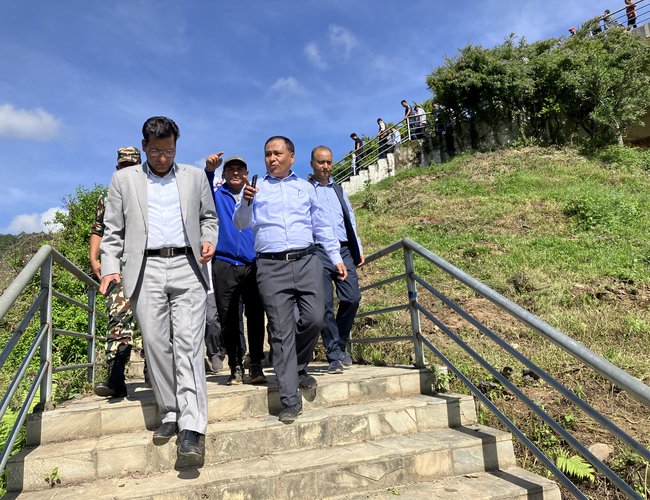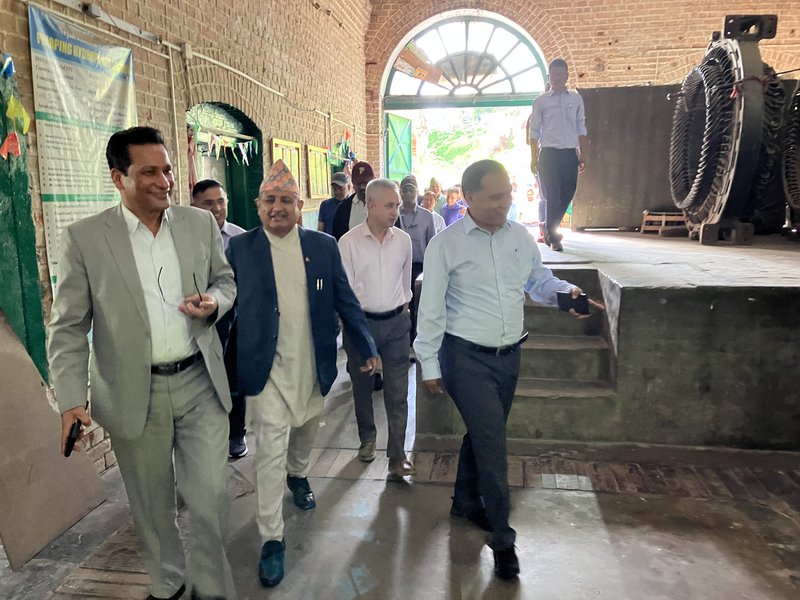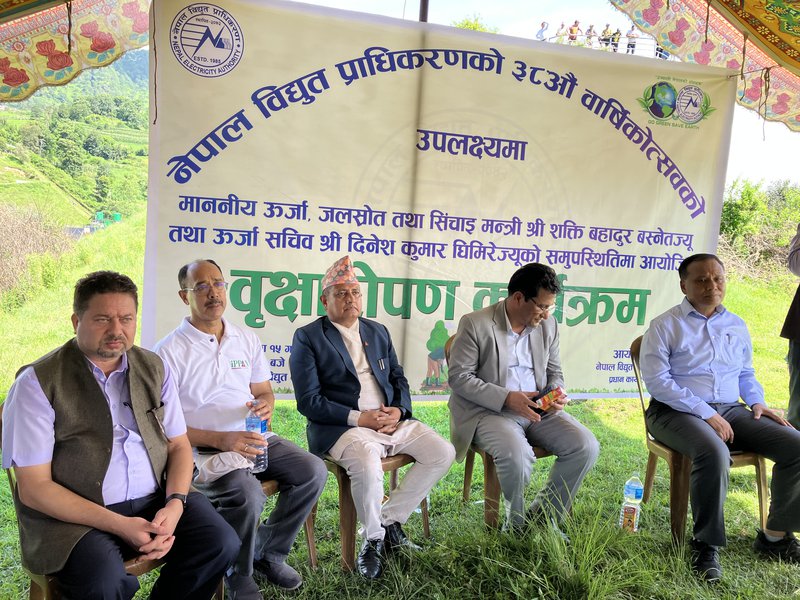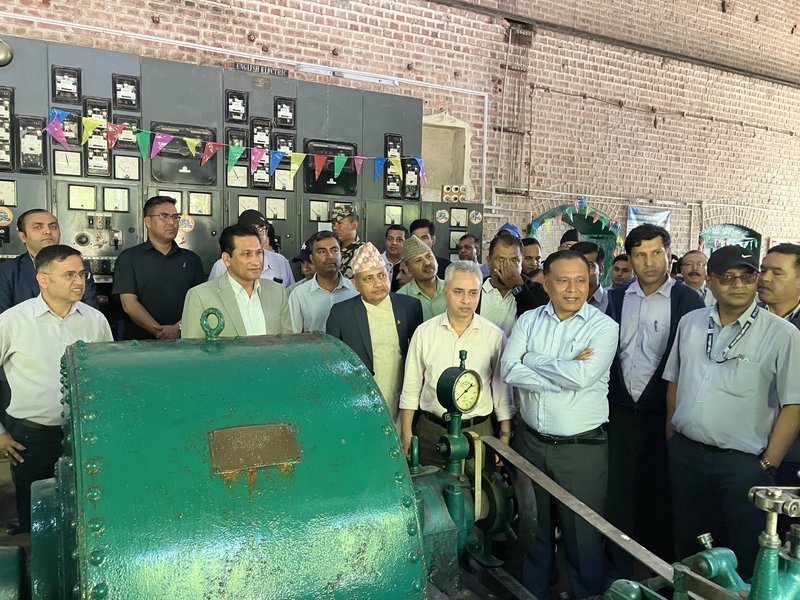
As the saying goes, history is a reflection of the past and a teacher of the future, and the Nepal Electricity Authority's announcement to transform Pharping Hydropower Pant is significant.
The transformation of the Pharping hydropower plant into an energy museum marks a significant change in its role and purpose. After years of neglect and prohibition, this historic hydropower plant will now have a new lease of life as a museum showcasing Nepal's long history of hydropower generation.

Originally built by the British in the early 19th century, Pharping is one of the oldest hydropower plants in Nepal and. Its construction represents an important milestone in the development of Nepal's energy infrastructure. It is noteworthy that this hydropower plant was established soon after World War I, indicating an early recognition of the potential of hydropower as a renewable energy source in the region.
By transforming the Pharping hydropower plant into an energy museum, Nepal aims to preserve and celebrate its rich hydropower heritage while educating visitors about the country's historical and technological advances in renewable energy. The museum is expected to feature artifacts, historical documents, and interactive displays to illustrate the evolution of hydropower in Nepal and its impact on the country's development.
The transformation of the Pharping hydropower plant into an energy museum is a step toward recognizing the value of sustainable energy and its role in shaping Nepal's past, present, and future. It also provides an opportunity for tourists and locals alike to learn about the country's contributions to the renewable energy sector and the importance of harnessing natural resources for sustainable development.
Kul Man Ghising, NEA's managing director, has not only accelerated the construction of transmission lines and hydropower projects, making the NEA system more efficient, but he has also shown a keen interest in preserving the history of power generation in Nepal. An important step towards this goal was the decision by the NEA Board to convert Nepal's first hydropower plant into a museum.

By converting the first hydropower plant into a museum, Kul Man Ghising and the NEA are ensuring that the rich heritage and milestones of power generation in Nepal are carefully preserved and made accessible to the public. This initiative not only highlights the country's progress in power generation, but also provides valuable insight into Nepal's technological advancements and contributions to the region's energy sector.
Through this thoughtful endeavor, the NEA aims to promote awareness and appreciation of the country's energy history while inspiring future generations to explore and innovate in the field of sustainable power generation. Kul Man Ghising's vision for the NEA goes beyond mere infrastructure development; it encompasses a commitment to preserving the past while paving the way for a brighter, more energy-efficient future.
The Nepal Electricity Authority has allocated one billion rupees for this project and has engaged the services of NEA Engineering Company Ltd. as the construction consultant.
The primary objective of this initiative is to link the historic hydrological core of the hydropower plant with tourism, making it an attractive destination for both locals and visitors. A comprehensive plan has been developed to achieve this. It includes the renovation of old structures within the facility and the construction of new structures on vacant land.
Once completed, the Energy Museum will showcase the evolution of hydropower technology in Nepal and its importance in shaping the country's energy landscape. The museum will provide interactive exhibits, informative displays and educational resources to raise awareness about renewable energy sources and the role of hydropower in sustainable development.
The project also aims to promote tourism in the region, as visitors will not only have the opportunity to learn about the history and function of hydropower, but also enjoy the natural beauty and serene environment surrounding the site.
By transforming the Pharping hydropower plant into an energy museum, Nepal is taking a significant step towards preserving its hydrological heritage and promoting renewable energy education and tourism in the country. The initiative is expected to have a positive impact on the local community and economy, while fostering a greater understanding of the importance of clean energy solutions for the future.
In the Dakshinkali Municipality of Kathmandu, there is a site located in the area of the central reservoir and power house. Plans are underway to transform this site into a vibrant tourist destination with a green park, restaurant, shop, zip line, picnic area, library, wall garden and other structures. In addition, the existing structures of the hydroelectric center will be rehabilitated and converted into a museum.
This ambitious master plan is estimated to cost around one billion rupees. The center is spread over a vast area of 324 acres, with 46 ropani for the reservoir and about 146 ropani for the power house area, all of which will be used for tourism development.
Recently, the Minister of Energy, Water Resources and Irrigation, Shakti Bahadur Basnet, was briefed on the master plan during a tree planting ceremony at the Farping Hydropower Center to mark the 38th anniversary of the authority. Minister Basnet emphasized the importance of preserving the historical value of the power plant for the benefit of scholars, researchers, and anyone interested in hydropower, making it a reference point for understanding its history. He also stressed the need for centralized policies and programs to promote the socio-economic development of the local population.
Energy Secretary Ghimire expressed his vision of transforming the center into an enchanting tourist destination, capitalizing on the natural beauty of the hydropower research site and its surroundings.
Based on the consultant's recommendations, the center will be developed as an energy museum, a research center and a remarkable tourist destination, according to the authority's executive director, Ghising.
The Farping hydropower plant, now known as Chandrajyoti, was inaugurated on June 9, 1968, when the then King Prithvibirvikram Shah lit a lamp at Tundikhel. Over the years, the center provided electricity to the royal family, the Rana family and others. However, due to the subsequent use of the reservoir water for water supply in various neighborhoods of Lalitpur, the operation of the power plant was suspended. It was later upgraded and restarted in January 2013.
With this transformative plan, the Farping Hydropower Center will not only retain its historical significance, but also become a thriving hub for education, research, and tourism, contributing to the growth of the local community and economy.

"A sense of humor and a memory of the past are part of the art of leadership, of getting along with people, of getting things done." Dwight D. Eisenhower As Eisenhower says, Ghising, Managing Director of Nepal Electricity Authority (NEA), always has a sense of humor and respect for the past. Announcing the transformation of Pharping Hydropower Plant is one example.
- The Sentiment Of Monetary Policy Seems Focused On Increasing Eemand: FNCCI President Chandra Prasad Dhakal
- Jul 26, 2024
- Monetary Policy 081/82 Is Making The Economy More Dynamic: Governor Adhikari
- Jul 26, 2024
- Global IME Bank And Shashila Motors Signed Agreement Regarding Electric Vehicle loan
- Jul 26, 2024
- Lok Bahadur Thapa, permanent representative of the UN in New York, was appointed as the Vice President of ECOSOC
- Jul 26, 2024
- Leeladevi Gadtaula Became The First woman Chief Secretary
- Jul 26, 2024
















